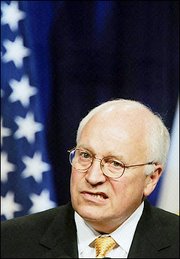I thought this was a wonderful idea -- as part of Canadian Rememberance Day tributes in The Year of The Veteran,
Veterans Affairs arranged an eight-day tour for a delegation of 300 First Nations and Metis veterans and youth to travel to Ypres, Vimy, Juno Beach, and Courseulles-sur-Mer to pay tribute to Aboriginal veterans and to do a "calling home" ceremony.
Our new governor general, Michaëlle Jean,
joined the group during the Juno Beach portion of their trip.
 Canadian Press photo
Canadian Press photo
 First Nations and Metis ceremonial performers outside the Kemmel school in Belgium. Veterans Affairs photos.
First Nations and Metis ceremonial performers outside the Kemmel school in Belgium. Veterans Affairs photos.
 Veterans and representatives from Veterans' organizations stand at attention during the Last Post, at the "calling home" ceremony at Hill 62.
Veterans and representatives from Veterans' organizations stand at attention during the Last Post, at the "calling home" ceremony at Hill 62.Last week, the Globe and Mail gave us
one warrior's story -- from Elmer Sinclair, now 84:
When Elmer Sinclair last trod on European soil, he did so as a warrior. Sixty years later, he is returning to pay tribute to comrades buried in ground he helped liberate. Mr. Sinclair, a Cree from Manitoba who lives in Nanaimo, spent much of his adult life in uniform. He served in the Canadian Army for all but the first nine months of the Second World War. Later, he re-enlisted to fight on the frozen hills of Korea before spending a year in the desert as a peacekeeper in the Gaza Strip. Those were assignments for a young man. He was not much more than a boy when he signed up as a regimental signaler with the Princess Patricia's Canadian Light Infantry. He then transferred to the Signal Corps as a radio operator.
Mr. Sinclair was born to a family living just outside Selkirk, in a home in the woods. His carpenter father belonged to the Peguis band, but his son would never live on the reserve. Young Elmer spoke English at home, and his parents saved their native tongue for their private conversations. The family moved to Pine Falls and seven-year-old Elmer was sent to Fort Alexander Residential School, operated by Oblate priests more interested in corporal punishment than celestial reward. "It wasn't heaven," Mr. Sinclair recalled in an interview. "They were mean to us and cruel. They prayed like hell in church, then beat the hell out of us afterward." After leaving school, he worked in a sawmill. Canada declared war on Germany two days after his 18th birthday. He enlisted in Winnipeg nine months later.
His expertise at transcribing and transmitting Morse code kept him out of the front lines, and he was assigned signal security. Mr. Sinclair landed at Gold Beach with the 50th British Infantry Division about a week after D-Day. He has never forgotten the scene. "All the pillboxes and the obstructions in the water. Pillars of cement. Barbed wire. All flattened out. It was an awful mess." After rejoining the Canadian Army, Mr. Sinclair tramped through France, Belgium and the Netherlands. He was in the port city of Bremen, flattened by years of Allied bombing, when Germany at last surrendered. Other soldiers' weapons went rat-a-tat-a-tat. His went dit-dah-dit dah-dit . . . Mr. Sinclair re-enlisted after the outbreak of the Korean War, rejoining the Princess Pats. At 29, he had a greater knowledge of the horrors of war than did younger recruits. "We were marching along a valley toward the hills to take over a position at the front," he said. "We saw a village ahead of us on fire. Burning. We got up close and started seeing bodies of American soldiers. They had been on a patrol the night before and gone to sleep there. "The Koreans or the Chinese came down off the hill, surrounded the village and burned it. The Americans started running back toward our lines and there must have been patrols of North Koreans or Chinese along the road. They killed them all. "Our men had been going forward laughing, having a good time. The sight sobered them up." Mr. Sinclair left the army in 1964 with the rank of Warrant Officer 2. During his trip to Belgium, Mr. Sinclair hopes to offer a final salute to a classmate from Selkirk, Sergeant O. D. Smith of the Royal Winnipeg Rifles, who was killed on Oct. 12, 1944. To pay homage to his friend, Mr. Sinclair will need to visit the Adegem Canadian War Cemetery midway between Bruges and Ghent on Highway N9. In the southeast corner, in Plot No. 8, Row G, Grave No. 10, he will find the final resting place of Sgt. Smith, one of 1,144 war dead buried in the cemetery. If he finds the grave, Mr. Sinclair said, "I'll just stand there and have a look." He knew the sergeant as Orville. He was just 23 when he died.
And here's another priceless piece of Canadiana -- in the Comments section to the Globe and Mail article on the Jean visit, was one
remarkable contribution from David Hawyard of Nanoose Bay, BC, who sent in this moving piece of poetry
We, the Descendants...
We, the descendants of Canada's Aboriginal, French and English founders,
and of all others who later arrived to help build this nation,
stand in unity as witness to this pledge.
Remembering that Canada's provinces and territories have been settled
by peoples whose mother tongues, heritage and values differed,
we pledge in the name of Canada, and to one another:
To recognize, to respect, and to celebrate Canada's diversity,
lest a loss of identity suffers unto our descendants;
To embrace tolerance, equality, sharing and compassion
as the moral cornerstones of our great nation;
To bond together as one in the pursuit of dignity, health,
prosperity and happiness for all Canadians;
To forever preserve and promote this mission
that we so proudly share.
